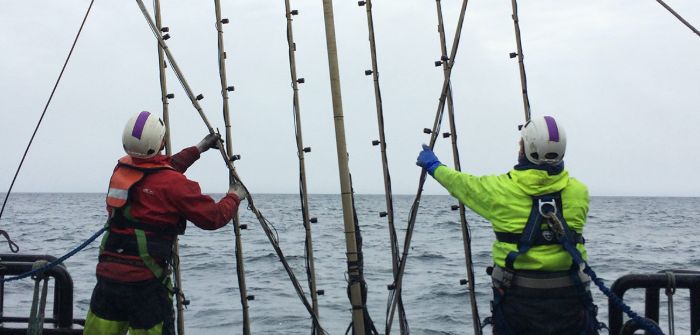Scientists at the US Naval Research Laboratory (NRL) have developed Acoustic Buoys to monitor the changing environment in the Arctic.
The buoys provide oceanographic data to improve prediction capabilities of ocean and climate models. They validated sound propagation theories from Arctic researchers and will continue to guide theoretical studies in the Beaufort Sea from March 2020 to March 2021.
Altan Turgut, research physicist at the NRL, said, “Our job, in real time, does the tomography in the ocean with buoys. Every four hours they assimilate data into the ocean models.”
Ocean acoustic tomography uses soundwaves to image sections of ocean temperature and current. The buoys provide real-time monitoring and operational capability, and enable under-ice acoustic communication and navigation capability for mobile platforms such as ocean gliders and underwater autonomous vehicle.
The buoys were deployed in the Beaufort and Chukchi seas on the shores of Alaska with two source moorings transmitting mid-frequency signals every four hours for 40 minutes and one Billboard Array recording acoustic data during the year-long experiment.
The Billboard Array is equipped with 64 receiver elements lying in a 7 x 4m vertical plane.
Turgut said, “Results from CANAPE (Canadian Basin Acoustic Prorogation Experiment) showed favorable sound transmissions are possible within a cold and fresher water layer at 100m to 200m depths. The sounds were bounded by warm Pacific summer water from above and warm Atlantic water from below.”
Scientific evidence indicates that sea ice has declined 13% in the summer and 3% in the winter per decade.
Turgut said, “Interaction between the ocean and atmosphere is increasing and becoming similar to those at lower latitudes with more open ocean and fragile thin ice conditions. Therefore, acoustic measurements of new ice composition and near-surface hydrography would be essential for accurate ocean and climate model predictions in the Arctic.”



